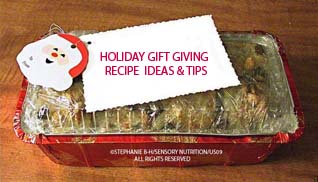
Who doesn’t love the smell of something yummy baking in the oven?
The sensory impact of cookies baking is one many of us can remember fondly from childhood if anyone in our families baked regularly or if we just walked by an open bakery door.
Today’s blog post will kick the work week off by focusing on an overview of cookies and their ingredients and mention where to find a wonderful sugar cookie recipe worth making.
Holiday Baking – Cookies and Their Ingredients Part 1 Overview
There are many types of cookies out there from egg-white based meringues; to traditional simple butter cookies (variations of shortbreads) involving sugar, fat, and flour; to various types of rolled or dropped “sugar” cookies with more moisture content including that coming from egg whites or whole eggs in them, etc.
One of my all time favorite sugar cookie recipes for children to make is from an older Betty Crocker Cooky Book (yes, the spelling of cookie was cooky in the book title) and is called Mary’s Sugar Cookies. Per report, Mary Herman worked in the Betty Crocker office answering mail from consumers and when she responded, she was allowed to officially “sign” the mail using the “Betty Crocker” signature name rather than her own. The sugar cookie recipe developed and tested in 1959 in NYC was named in her honor.
If you search, you can find that others have posted the recipe for Mary’s Sugar Cookies in consumer forums on the www–you’ll find updated versions of the recipe add in 1/2 tsp. salt to further bring out the sweetness of the cookie. (Yes, it is true that salt depresses bitter taste perceptions, while increasing the taste perception of sweetness). The recipe initially didn’t use self-rising flour, so includes cream of tartar and baking soda instead for rising (so when you see “soda” in the version of the recipe on the www, it means baking soda).
When she was a young, my daughter simply loved to make “Mary’s Sugar Cookies” at holiday time and had lots of fun decorating them. That particular recipe is a rolled one and it also involves refrigeration–never skip refrigeration as it is a key tip to success when making these cookies! To optimize the cookie quality, also avoid over-rolling & multiple re-rolling of the dough (both not only add more flour to the dough as it is being rolled out, they also increase the development of gluten strands, which I’ll discuss in an upcoming post on “flours”).
Cookie recipes can vary a lot and some are rolled and can be cut into various shapes and some can be made as drop cookies or as bar cookies, while others might be piped or go through a cookie press to aid in shaping the dough, while others might be pressed into or laid over special cookie molds. Some cookies are actually mini-pies as they use a variation of any number of pie-type crusts or bases and have a filling.
As a general rule, cookies are lower in moisture content than cakes, muffins, and breads since typically most of the moisture in a cookie comes from butter, possibly egg white and possibly egg yolk, extracts or other liquid flavorings, possibly a small amount of water or “milk” type product addition, and in some cases use of molasses or honey as a contributing sugar source in the recipe.
Although most cookies are baked, some obviously are not and may be refrigerated and may contain particles of previously baked items such as graham cracker crumbs, cookie crumbs, cake crumbs, etc., such as when making bourbon balls, for example.
Cookie varieties will each have a different “shelf life” depending in part upon exactly how they are made, cooled, and stored.
Some cookies are best made close to consumption time such as cocoa meringues stored airtight to keep them perfectly dry so that they do not weep; while other cookies might hold longer and can be made farther ahead if stored afterwards under optimal conditions to better retain their quality over time.
An example of the latter is a spice-rich Lebkuchen flavored with molasses and bursting with blended notes of nutmeg, cinnamon, cloves and allspice, etc. I can still remember going to a German bakery when I was a child and walking in the door to the perfumed air rich with those spicy aromas at holiday time (and my mother’s friend, who was Jewish by birth, always drove us there as my mom didn’t drive when I was young). The German baker made Lebkuchen both with icing and without, and it was scrumptious either way.
Future blog posts will focus on more specifics of baking ingredients starting with flour, etc.; cookie baking equipment; techniques of rolling, scooping and baking; developing flavor in cookies; and packaging to retain maximum sensory enjoyment in storage.
A little bit about troubleshooting cookie problems will also be mentioned (controlling shape, spread, browning, etc.), then we’ll move on to cakes.

